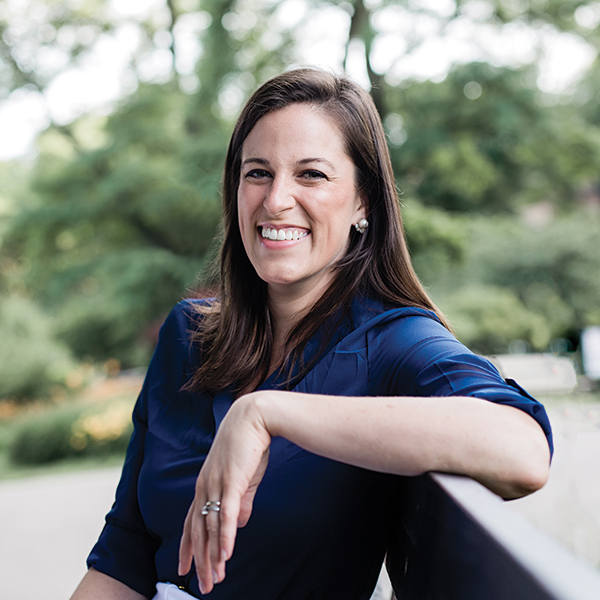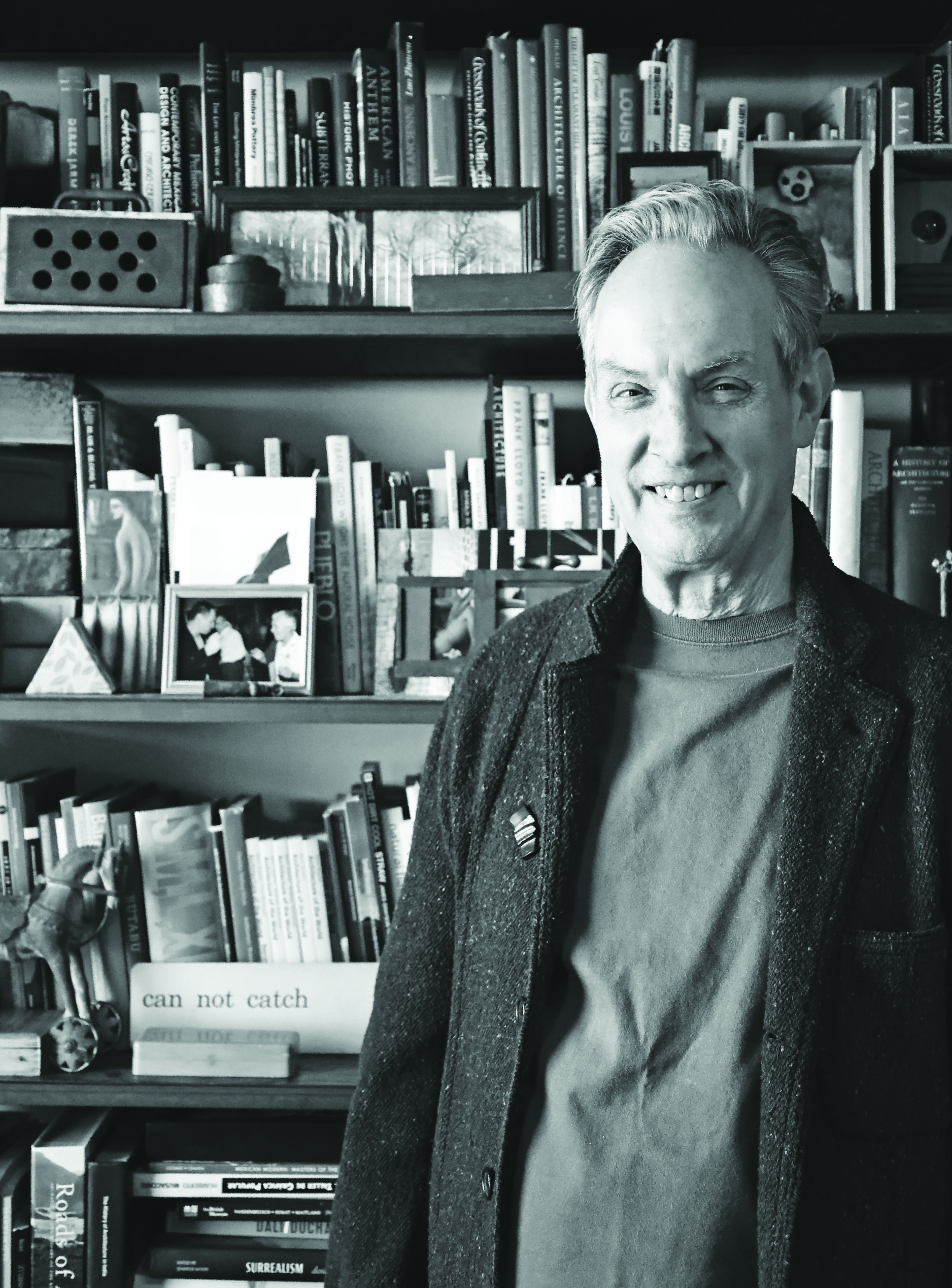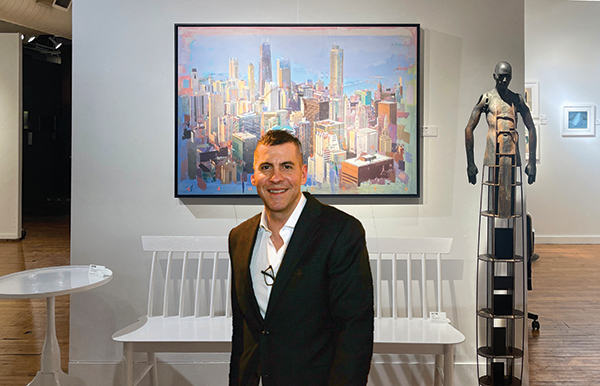A Protest Banner Lending Library

ARAM HAN SIFUENTES CREATES A SPACE FOR DISSENT
By ALISON REILLY
I meet Aram Han Sifuentes on the first floor of the Chicago Cultural Center in the Garland Gallery. She is working at one of the tables set up in her public studio—a “workspace, workshop” as she calls it, with her young daughter Nara and her collaborator Verónica Casado Hernandez. On each of the tables is a sewing machine, scissors and assorted fabrics. Hanging above them are large, cloth banners with slogans like “America Was Never Great,” “Climate Change is Real,” and “We Are In This Together.” Across from their workstation, I see hundreds of postcards answering the question posted on the wall: “What does your banner say?”

Aram’s Protest Banner Lending Library offers those feeling taxed by a divided political system a space for creative expression. The project is part of the Chicago Cultural Center’s ongoing artist-in-residence program, which provides a stipend and dedicated studio space for artists who hope to interact directly with the public. Along with walk-ins, Aram, Verónica and their two other collaborators, Ishita Dharap and Tabitha Anne, often host school and community groups. Visitors are invited to imagine what their protest banner would look like and then, if time allows, they can make one of their own.
“We have all the materials, and we teach people how to make their own protest banners,” Aram says. “It takes about an hour and a half, so it’s a bit of a time commitment.” Sewing is inherently a slow process. In a digital world where political activism can mean copying and pasting a form letter to a representative, designing and sewing a cloth banner can be a radical exercise.
For Aram, the act of sewing is itself a form of resistance. After the 2016 election, she began making banners at home by herself and then started to invite friends over to create their own designs. Soon, she was hosting workshops at the Jane Addams Hull-House Museum and the Smart Museum. This past month she was invited to the Whitney Museum in New York to co-present a banner-making workshop with another Chicago-based artist, Cauleen Smith.
“Before any big protest we get a wave of people all wanting very specific slogans so we try to be good about keeping up with it. But there’s too much to keep up with these days!” Aram says. Although the banners have been popular for protests like the January 2017 Women’s March, they can be checked out for other purposes, too. “A high school teacher recently took one out to put in her classroom for a couple weeks.”

Politics and sewing have always been intertwined in Aram’s life. Her mother, Younghye Han, was an artist in South Korea and ran her own art center. When Aram’s family immigrated to Modesto, California in 1992, her parents started working at a dry cleaner and Younghye became a seamstress. Like many in the garment industry, Younghye was paid per item, which Aram says, “leads to unregulated working conditions.” Aram learned to sew when she was six years old by helping her mother with small pieces. “For me engaging in the act of sewing is always about that history and social context.”
Aram has questioned her own status as an immigrant in her ongoing project, US Citizenship Test Sampler. In 2012, as she beganstudying for the United States Naturalization Test, she decided to hand sew the 100 questions and the answers onto a single piece of fabric. The questions range from “Who makes federal laws? (Congress)” to “During the Cold War, what was the main concern of the United States? (Communism).” The long scroll, which is still in progress, is now on display at the Hull-House, along with a collection of other needlework samplers.
After starting the project, Aram decided to start teaching other non-citizens how to create samplers. The idea is based on needlework samplers that were used in colonial America to teach children how to sew. “They would sew the alphabet and numbers and learn educational concepts,” Aram notes. “Adolescent girls from wealthier families would create another decorative, pictorial sampler to show her worth as a woman and as a wife to her potential suitor.”

Each participant that Aram has worked with chooses one question and answer from the test and sews it, along with their own decoration, on a square of fabric. The completed samplers are available for purchase for $725 each, the cost of applying for citizenship. The full amount goes directly to the participant to help cover any costs associated with the process.
Symbolically, the project speaks to the monetary value associated with immigrant labor. While working on her own sampler, Aram tracked the number of hours she spent working on it and estimated that after selling the piece, she had only made about $2 an hour. But, like the colonial samplers, the project functions on another level. “I teach people how to sew and depending on their needs I tutor English or we study for the citizenship test together.” The longer Aram spends with an individual, the more she is able to help them execute complex ideas for their sampler and better prepare them for their test.
US Citizenship Test Sampler also serves as a reminder of the uphill battles that people who want to become citizens have always faced. Even if they have prepared by studying, the cost of taking the test can be prohibitive. There has been a renewed interest in Aram’s project following the 2016 election, and many of the samplers have sold within the last few months. “It’s been really awesome because before the recent election the samplers that sold were more aesthetically beautiful, but now the ones that are selling are about need—either to apply for citizenship or get legal help, because a lot of my participants are undocumented.”
After her residency ends at the Cultural Center, Aram will travel to Washington D.C. for the month of June. As a Smithsonian artist research fellow, she will have access to the archives of American art. “I’m going to research recipes, which includes food and drinks, but also syllabi and templates for unrealized projects. I use the word recipe, but it’s really a very broad interpretation.”

The recipes will become another piece of Aram’s work. “These banners, some were made by me, but a lot are made by other people who come in here or to workshops and then donate them. In a way this is a collection in and of itself. That [pointing to postcards on the wall] is a collection of many different people and their contributions. Ballots, needles, samplers, I think all of them are pieces from individuals that come together as a collection.”
The Protest Banner Lending Library at the Chicago Cultural Center is open Tuesday-Friday, 12-6pm through May 18, 2017. For more information visit aramhan.com.
Top image: Aram Han Sifuentes (Right) and Verónica Casado Hernandez (Left) in the protest banner lending library at the Chicago Cultural Center. Photo: eedahahm






